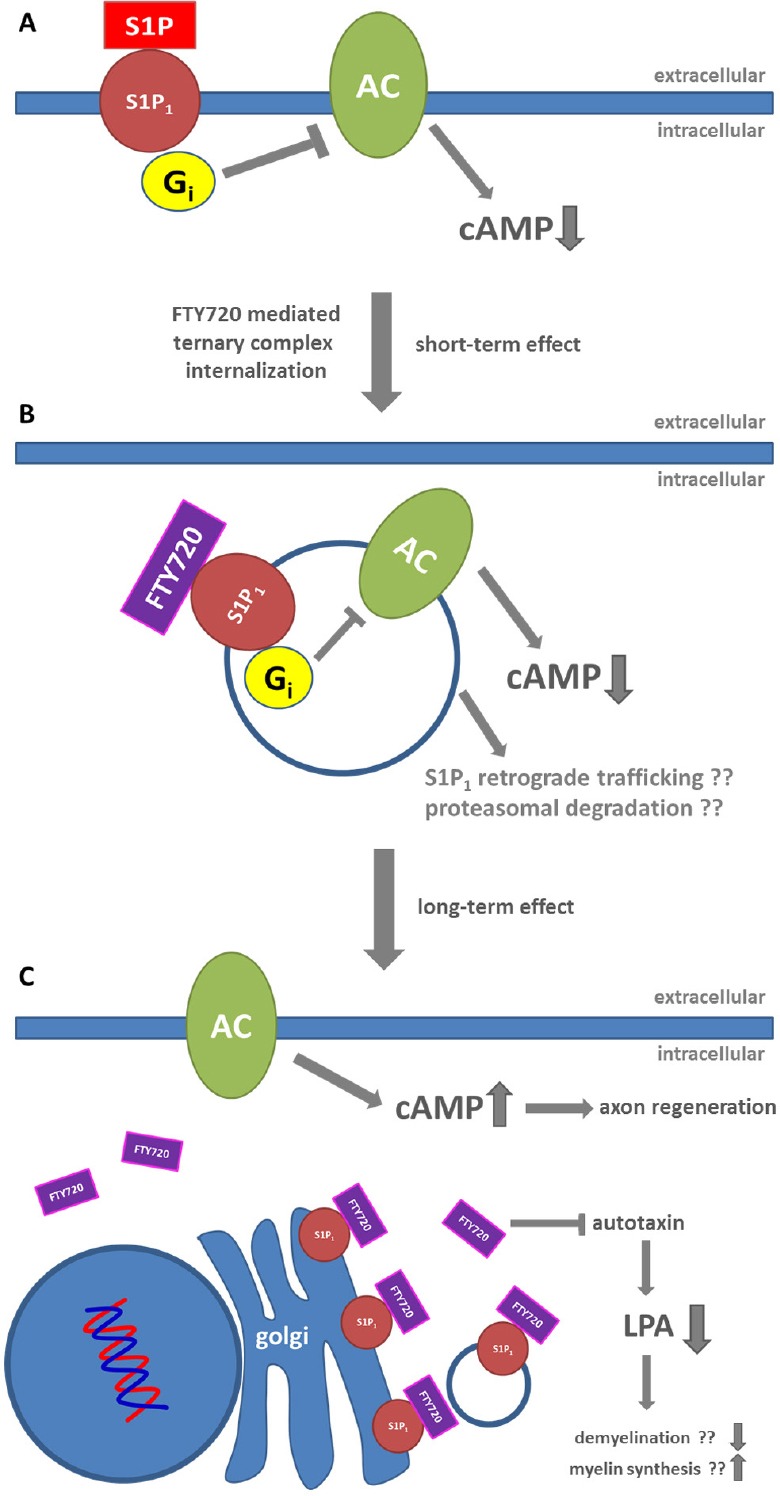Figure 1.

Possible mode of action for fingolimod (FTY720) mediated improvement of nerve regeneration.
In the presence of the natural ligand sphingosine-1-phosphate (S1P), activation of the S1P1 receptor leads to inhibition of adenylate cyclase (AC) through Gi. (A) Binding of phosphorylated FTY720 to S1P1 may lead to internalization of the S1P1-Gi-adenylate cyclase system as ternary complex causing sustained inhibition of cyclic adenosine monophosphate (cAMP) formation. The ternary complex may directly undergo proteasomal degradation or retrograde transport to the Golgi. (B) In the presence of constantly high concentrations of FTY720, de novo synthesized S1P1 may be 'trapped' in intracellular compartments, possibly the Golgi, preventing re-localization of S1P1 to the plasma membrane and thus formation of the presumptive S1P1-Gi-adenylate cyclase complex. This allows for increased generation of cAMP due to a reduction of adenylate cyclase inhibition. Additionally, FTY720 may attenuate demyelination via inhibition of autotaxin catalyzed LPA formation (C).
